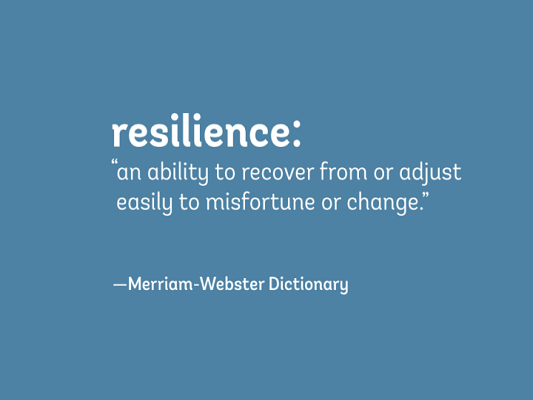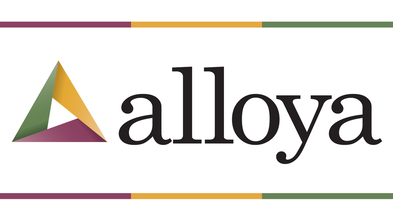|
by Tahiti Weaver, Assistant Vice President of Compliance, Alloya Corporate FCU
Don’t forget 2020. It might be tempting to stuff your memories of last year into a dark corner of your brain so they may fade away into the abyss of things you prefer to not remember. Like that haircut from middle school. But here’s the thing about the past. While it may be uncomfortable to recall, reflecting on it is the only surefire way to guarantee it never repeats itself. As the 19th century Spanish-American philosopher George Santayana once said, “Those who cannot learn from history are doomed to repeat it.” The past not only gives us appreciation for the present, but also preparation for the future. As former President Dwight D. Eisenhower once proclaimed, “The past sharpens perspective, warns against pitfalls, and helps to point the way.” With these historical quotes in mind, we challenged members to do exactly as Santayana and Eisenhower instructed: to reflect on the past… and then share their insights with us! Just three days prior to the one-year anniversary of the World Health Organization’s pandemic declaration, we invited members to participate in a Business Continuity Survey. We asked questions like, “How did your credit union respond to the pandemic? How have your operations changed over the last 12 months? Were you prepared for business as usual when the pandemic came knocking?” Through the survey responses, Alloya hoped to learn more about the ways our members reacted to COVID-19, how you kept your credit union running and where your business continuity plans had gaps in order to uncover new tactics to help support your business continuity program. The responses provided many illustrations of how credit unions adapted, accommodated, restructured, and in several cases, improved their service delivery model for members – with or without a formalized pandemic response plan in place. Despite not having a prepared response to the pandemic, slightly more than 40% of survey respondents described something akin to heroic agility as they quickly strategized and swiftly pivoted to continue operations. Simply astounding! I’m willing to bet most, if not all, credit unions now have a pandemic response plan in place (with the hope it will never be needed again). But the lessons you learned are likely applicable to other types of disruptive events. So, let’s not forget 2020; let’s leverage it to strengthen operational resilience no matter what comes our way. Lesson #1: Prepare to be flexible During the acute phases of the pandemic, almost everyone had to absorb and adapt to unprecedented conditions in real-time. Credit unions with flexible and adaptable business continuity plans reported better response outcomes, which speaks to the importance of planning and preparedness. At the same time, no single entity was completely spared from operational challenges, regardless of how much planning and preparation had been completed ahead of time. This speaks to the importance of flexibility. Consider these findings from Alloya’s Business Continuity Survey, conducted in March 2021.
The most significant change attributed to business interruptions last year related to improving remote capabilities and/or expanding digital technologies. Lesson #2: Acknowledge your shortcomings When we develop a contingency plan – as an organization or an individual – we tend to plan for the worst and hope for the best. But the assumptions we make surrounding “worst case scenarios” are not always spot on. Therefore, when we experience a disruptive event such as COVID-19, it can expand how we perceive worst case scenarios, failure points and potential impacts. When we acknowledge those previously unidentified points of failure in a post-incident review, and then proactively take steps to manage those risks, we can minimize or eliminate the potential adverse impacts to critical operations in future crisis situations. “We did not account for internal stress and anxiety. We had to close lobbies well before our external situation met criteria according to our pandemic plan, and at the beginning of the pandemic, 90% of staff at one of our branches refused to work in the branch due to fear.” – Anonymous Survey Respondent Lesson #3: Make time for rehearsal The thing about disruptive events is that they happen when we least expect them. Otherwise, they wouldn’t be considered disruptive, right? This means, no matter how unlikely a certain disruptive event may seem, we must accept them as a possibility and rehearse our responses accordingly. Whether it’s a pandemic, cyberattack, technology failure or natural disaster, once you have created a documented response plan, take it for a test run. By testing a range of severe but plausible scenarios, you will be better equipped to evaluate and validate your business continuity plan and strengthen operational posture if/when the disruptive event arrives or evolves. “I’ve gained greater awareness of the reality that, even if you think it won’t happen, it can and it will. The COVID-19 pandemic has opened our eyes to what a ‘pandemic’ really means. We have put a much larger emphasis on more than just remote desktop emergency testing; we are not just checking the boxes, but instead testing in actual environments.” – Anonymous Survey Respondent Lesson #4: Put your money where your strategy is Business continuity management is a lifeline to your credit union’s bottom line, not a checklist of items waiting to be crossed off. During a disruptive event, your operating model will be put to the test. Some organizations might find their model is efficient and well-prioritized. Others might find there is room for improvement. When completed correctly, a post-incident review can help prioritize the most essential operational areas, maximize key resources, verify that risk-reducing expenditures are directed toward eliminating points of failure and ensure that allocations support the business strategy. “We changed our business days to Monday through Friday. We used to be open on Saturdays but found that the expense to be open outweighed the benefits, so when we implemented our new hours, they no longer included Saturdays.” – Anonymous Survey Respondent Lesson #5: Talk it out If your credit union has not done so already, make time to discuss the disruptions of 2020 among key staff. Address points of strength, opportunities for improvement and any corrective actions that might be needed. Ask questions such as:
An effective post-incident review requires structured and collaborative information gathering and some brainstorming. After you’ve identified what worked well and have evaluated the actual versus expected impacts, document any open risks that could hinder business continuity in the future. Include significant threats in your enterprise risk management (ERM) risk register and update the business continuity plan accordingly. So, where to from here? Here are your action items:
In the end, your credit union will be better equipped to identify and protect itself against threats and potential failures, respond and adapt to disruptive events, and minimize impacts on critical operations no matter what comes our collective way in the future. As we vow to never forget the disruptions of 2020, let’s remember that adversity reveals strength and challenges reap resilience. We’re stronger on the other side. For more information about the survey results, lessons shared or strategies for strengthening your credit union’s operational resilience, contact Julie Hatfield, Senior Business Consultant at (720) 540-4632. Comments are closed.
|
The MemoThe Memo is DakCU's newsletter that keeps Want the Memo delivered straight to your inbox?
Archives
July 2024
Categories
All
|
|
Copyright Dakota Credit Union Association. All Rights Reserved.
2005 N Kavaney Dr - Suite 201 | Bismarck, North Dakota 58501 Phone: 800-279-6328 | [email protected] | sitemap | privacy policy |






